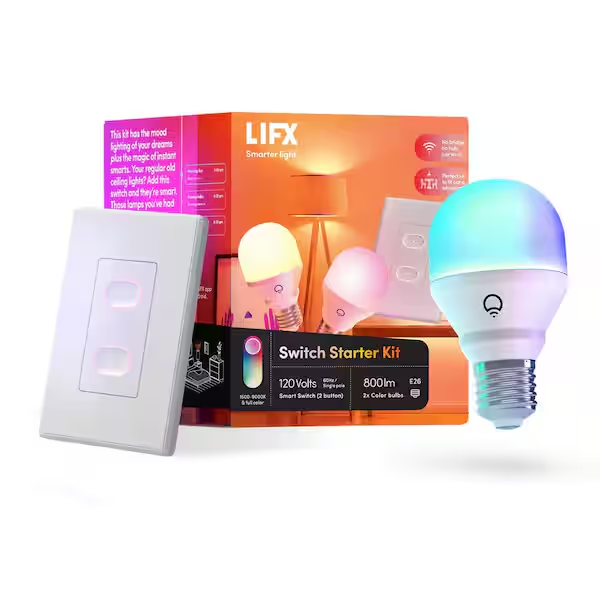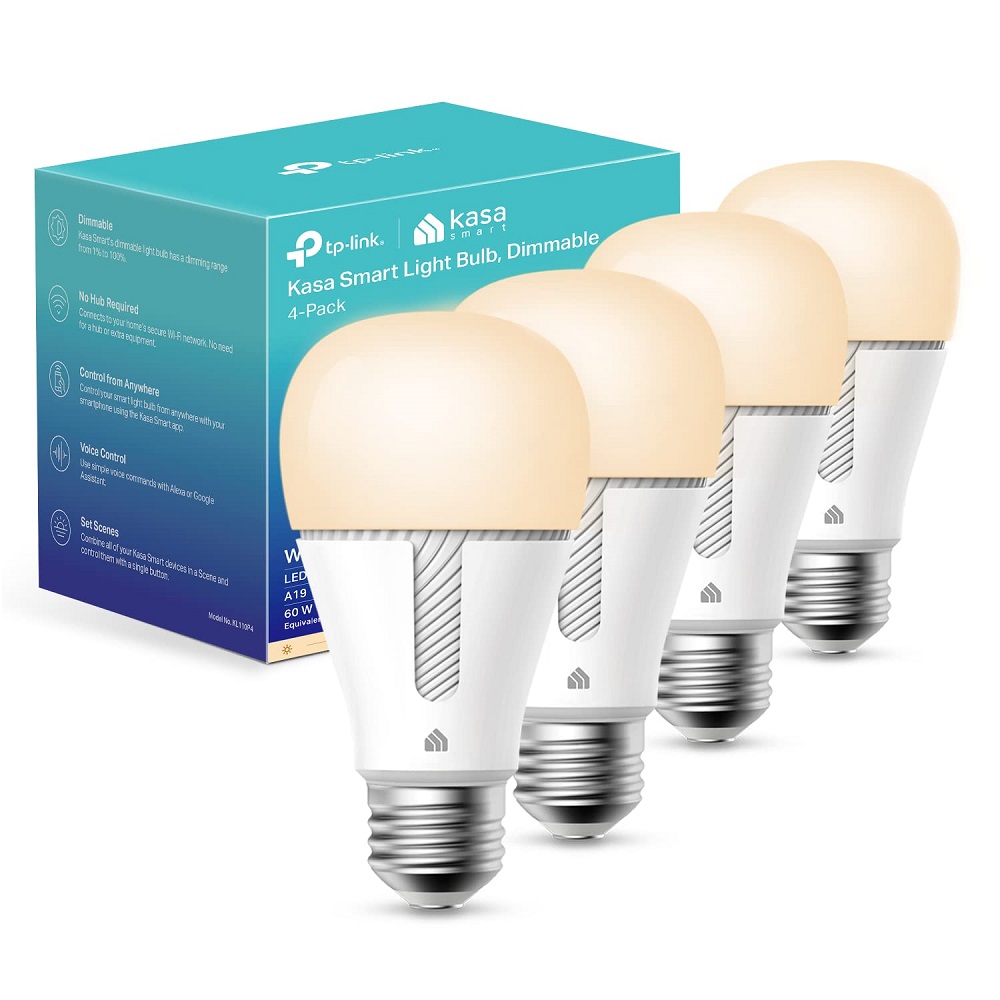Smart bulbs have become popular for their convenience, energy efficiency, and connectivity features. They allow users to control lighting via smartphone apps or voice commands, enhancing comfort and adaptability in our living spaces. However, many people wonder if these advanced lights consume electricity when they’re turned off. Myths and misconceptions abound about the power usage of smart bulbs, leading to confusion and concern among consumers. Do smart bulbs use electricity when off? This article aims to clarify the truth about smart bulb energy consumption when they’re off, helping you make informed choices about your lighting solutions.
Understanding Smart Bulbs
What Are Smart Bulbs?
Do smart bulbs use electricity when off? Smart bulbs are energy-efficient lighting devices that connect to your home Wi-Fi network or Bluetooth. They often come with additional features, such as adjustable brightness, color-changing capabilities, and programmable schedules. The versatility of smart bulbs allows users to customize their lighting according to their preferences and routines. For instance, you can set your smart bulbs to turn on automatically at sunset or adjust their brightness with a simple voice command or tap on your smartphone.
Smart bulbs include technologies such as LED (Light Emitting Diode), which contributes to their energy efficiency. Compared to traditional incandescent bulbs, LEDs use significantly less power for the same light output. This energy efficiency often leads users to believe that smart bulbs are just as economical when they are off.
Benefits of Smart Lighting
The advantages of smart lighting extend beyond mere convenience. They often offer better control over energy consumption. Smart bulbs allow you to set color temperatures that can enhance your mood, like soft white for relaxing areas and bright daylight for workspaces. You can also schedule them to reduce usage during times you’re not home, resulting in lower electricity bills.
Additionally, smart bulbs can integrate with home automation systems, leading to energy-saving habits. For example, pairing smart bulbs with motion sensors can ensure that lights only operate when someone is present, further reducing electricity use. Understanding these benefits lays the groundwork for evaluating smart bulb energy consumption.

The Myth of Energy Consumption When Off
Common Misconceptions
Do smart bulbs use electricity when off? One widespread misconception is that smart bulbs draw significant energy when they’re turned off. Many consumers fear that their smart lighting solutions contribute excessively to their energy bills, even when not actively used. This belief can discourage people from investing in smart lighting technology, limiting their potential to enhance home convenience.
Another point of confusion arises from discussions surrounding “phantom loads” or “vampire energy.” Many electronic devices do consume small amounts of energy while in standby mode, and it’s natural for consumers to assume that smart bulbs behave similarly.
The Reality of Smart Bulb Power Usage
When electric appliances, including smart bulbs, are switched off but still plugged in, they may use a minimal amount of power to maintain their connection to the network. However, this energy draw is typically very low for smart bulbs compared to other devices like televisions or gaming consoles. Smart bulbs generally enter a low-power state when off—often consuming less than a watt.
For instance, a standard smart LED bulb might draw around 0.5 to 1 watt when it’s turned off. This power usage is negligible, especially when you consider that even a small LED bulb commonly provides about 800 lumens of light output while active. In comparison, traditional incandescent bulbs consume around 60 watts or more, making the difference particularly stark.
Factors Affecting Energy Consumption
Type of Smart Bulb
Different types of smart bulbs exhibit varying energy consumption characteristics. Some models come with more advanced features that might lead to slightly higher standby power usage. For example, smart bulbs equipped with color-changing technology might use a little extra energy while connecting to your Wi-Fi. Still, the difference is minor compared to their active consumption.
Comparatively, simpler smart bulbs without extensive functionalities tend to consume even less power when off. Understanding the type of smart bulb you have helps provide context for its energy draw. That also means it pays to do your research before purchasing; you can find models that align closely with your energy efficiency goals.
Usage Patterns and Settings
The way you use your smart bulbs can also affect their energy consumption. If you often leave your smart bulbs powered on but inactive—meaning they are not providing light but still connected—you may see minor but unnecessary energy usage. Setting schedules and routines can minimize this effect, allowing you to avoid situations where the bulbs remain “on” but are not contributing to illumination.
For example, using a scheduling feature to turn off the lights overnight or while you’re away is a practical approach. Additionally, integrating sensors that automatically turn off the bulbs when a room is unoccupied can greatly lower overall energy consumption.

The Importance of Energy-Efficient Lighting
Energy Conservation Goals
Switching to smart bulbs represents a step toward energy efficiency, but understanding their energy consumption—even when off—is crucial. Using energy-efficient lighting helps reduce your carbon footprint while also decreasing electricity bills. The cumulative effect of switching all your standard bulbs to smart LEDs can lead to considerable savings over time.
Smart bulbs generally use up to 80% less energy than traditional incandescent bulbs, and that figure only increases when considering their low standby usage. This efficiency is essential in an era focused on sustainable living and energy conservation initiatives.
Implications for Homeowners
Homeowners should weigh the benefits of investing in smart bulbs against the common myths surrounding their energy consumption. While concerns about energy usage when off are valid, the reality demonstrates that smart bulbs remain an energy-efficient choice overall. Making informed decisions about your lighting choices can benefit both your wallet and the environment.
Consider how often you’re away from home or how long you leave your lights on unnecessarily. Addressing these factors allows homeowners to feel more at ease investing in smart technology while still promoting energy conservation.
Measuring Your Smart Bulb’s Power Consumption
Tools for Measurement
For those curious about how much power their smart bulbs use when off, measuring energy consumption is relatively straightforward. Using a watt-meter, a simple device that plugs between your appliance and the electrical outlet, provides accurate readings of power consumption.
As you plug your smart bulb into the watt-meter and assess its energy draw in both the “on” and “off” states, you can gauge how much power it consumes during each phase of usage. This hands-on approach not only demystifies how smart bulbs work but also reinforces informed energy management practices.
Understanding Measurements
When measuring your bulbs, look for ratings in watts (W). To get a clearer sense of energy usage, compile data on the number of bulbs in your home and their average energy draw when off. You can then estimate the total energy consumption when multiplied by the hours of standby power throughout the year, which can help assess the impact on your electricity bills.
For example, if you find that each smart bulb uses approximately 0.5 watts when idle, and you have ten such bulbs, that equates to 5 watts. Over the course of a full day, those bulbs would consume just over 0.12 kilowatt-hours (kWh), which amounts to roughly 44 kWh per year. Understanding these numbers places the impact of smart bulbs into perspective.

Smart Choices for Energy Efficiency
Choosing the Right Smart Bulb
When purchasing smart bulbs, look for energy-efficient models. Many brands offer bulbs that highlight their low power consumption when off. Check product specifications for voltage, power draw, and energy ratings, which collectively influence performance.
Additionally, certifications from organizations such as ENERGY STAR indicate that a product meets high standards of energy efficiency, which can guide consumers toward better options.
Setting Up Efficient Systems
Incorporating smart bulbs into a broader energy management system enhances efficiency. Pairing smart bulbs with home automation systems can optimize their usage across your entire home. For example, smart home hubs allow for seamless integration with motion sensors and schedules. This setup helps ensure that lights activate only when needed, minimizing energy waste and keeping your home efficient.
Furthermore, consider utilizing dimmer features available with many smart bulbs. Dimming lights can save energy and enhance ambiance without needing to switch lights completely off. Finding the right balance of lighting and energy efficiency makes for a more sustainable approach to home lighting.
Empowering Your Lighting Choices
Making Informed Decisions
Understanding smart bulb energy consumption when off clears up common myths and empowers consumers to make educated lighting choices. While these bulbs draw minimal power when not actively illuminating spaces, their overall efficiency still positions them as an environmentally friendly option compared to traditional incandescent bulbs.
Encouraging Sustainable Habits
Do smart bulbs use electricity when off? As technology continues to evolve, embracing smart lighting solutions reflects a commitment to modern convenience and sustainable living. Awareness of energy usage, including how much power smart bulbs use in various states, promotes responsible consumption.
By integrating smart bulbs into your home, adjusting settings to maximize efficiency, and selecting quality products, you contribute positively to both your comfort and the environment. As you navigate your lighting options, remember that informed choices lead to brighter, smarter, and more efficient spaces—transforming not just your home but your approach to energy use for the better.